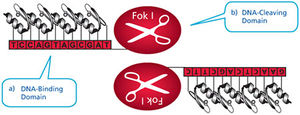CCR5, Delta-32 Mutation and the HIV Infection Pathway
Introduction
At right is a sample image insertion. It works for any image uploaded anywhere to MicrobeWiki. The insertion code consists of:
Double brackets: [[
Filename: PHIL_1181_lores.jpg
Thumbnail status: |thumb|
Pixel size: |300px|
Placement on page: |right|
Legend/credit: Electron micrograph of the Ebola Zaire virus. This was the first photo ever taken of the virus, on 10/13/1976. By Dr. F.A. Murphy, now at U.C. Davis, then at the CDC.
Closed double brackets: ]]
Other examples:
Bold
Italic
Subscript: H2O
Superscript: Fe3+
CCR5 (C-C chemokine receptor type 5) is surface protein located on the plasma membrane of white blood cells. CCR5 acts as a cytokine receptor and is primarily expressed on cells involved in the immune response, such as T-cells and macrophages. Individuals with mutations in one or both of the CCR5 alleles exhibit resistance to the Human Immunodeficiency Virus type 1 (HIV-1), the most common strain of the virus, as HIV-1 uses CCR5 as a co-receptor of infection.
Function
Chemokines are proteins that are involved in the direction of immune cell migration in the body. There are over fifty human chemokines and all work by binding to G-protein-coupled chemokine receptors, such as CCR5, on the surface of cells. CCR5 is one of the eighteen human chemokine receptors that have been identified so far. CCR5 regulates both the trafficking and effector molecule production of T-cells, immature dendritic cells and macrophages.
.
HIV Infection
HIV-1 infection of a cell starts with the interaction between the envelope glycoprotein gp120 and the host leukocyte glycoprotein receptor (CD4), and is followed by the binding of the virus to either CCR5 or CXCR4. The high affinity between gp120 and CD4 and the subsequent binding with the CD4 protein, exposes the third variable region (V3) loop of the gp120 which allows it to bind with the chemokine receptor (CCR5 or CXCR4). The binding of the V3 loop with the chemokine receptor leads to a series of structural rearrangements in GP120 that leads to the fusion of the virus and cell membranes.
br>
Section 3
Include some current research in each topic, with at least one figure showing data.
Conclusion
Overall paper length should be 3,000 words, with at least 3 figures.
References
Edited by student of Joan Slonczewski for BIOL 238 Microbiology, 2009, Kenyon College.

